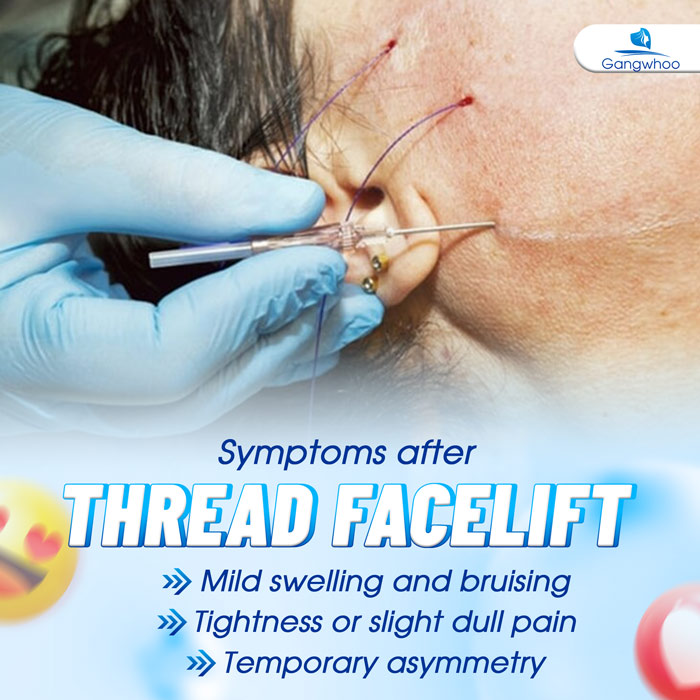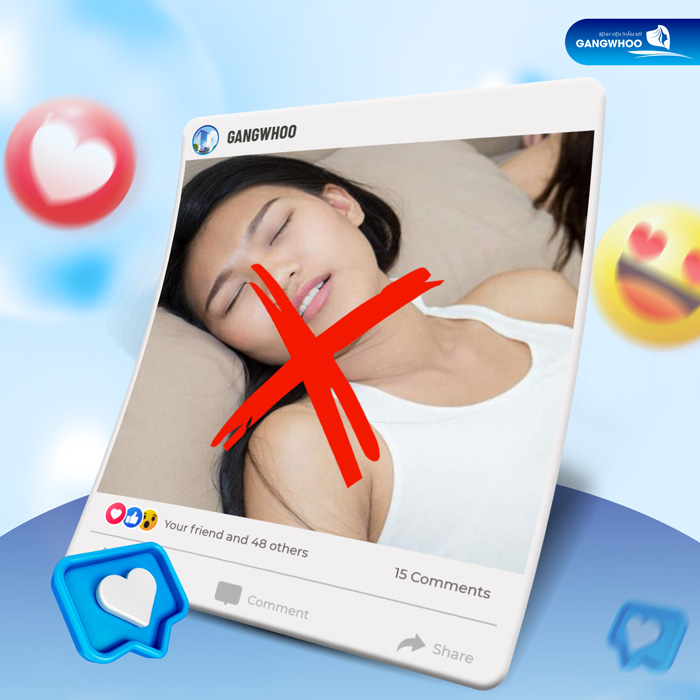Post-Thread Lift Care: What to Eat, Avoid, and Keep in Mind
I’ve just had a thread lift, doctor. Could you please guide me on how to properly care for my skin at home after the procedure?
I’ve just had a thread lift, doctor. Could you please guide me on how to properly care for my skin at home after the procedure?
I am Dr. Le Ngoc Tuan Anh, Head of the Thread Lift Department at Gangwhoo Cosmetic Hospital. With over 15 years of experience in aesthetic surgery, I’ve found that one of the key factors determining the effectiveness and longevity of a thread lift is proper post-procedure care.
There have been many cases where clients underwent technically correct procedures, but due to improper aftercare, their results were compromised or even led to avoidable complications. This article provides medically accurate and practical post-thread lift care guidelines.
After the procedure, clients may experience some normal physiological reactions:

These symptoms are common and typically improve within 5–7 days with proper care.
After completing the procedure, proper post-thread lift care plays a decisive role in recovery time and the longevity of results. Below are specific guidelines:

Within the first 48 hours, gently apply cold compresses to the treated areas to minimize swelling, reduce bruising, and help maintain facial contour. When doing this:
An important rule in post-thread lift care is to avoid any strong mechanical effects:

Cleansing is essential but must be done very gently:

Another key reminder for post-thread lift care is to avoid makeup and heat exposure:
A factor often overlooked but extremely important in post-thread lift care is sleeping posture. Maintaining the correct posture helps reduce swelling and prevents thread displacement or facial contour distortion.

During the first 5–7 days, maintain a supine position with your head elevated 30–45 degrees above heart level.

Sleeping on your side or face down may create pressure on the treated areas.
Avoid clenching your teeth, biting your lips, or any habits that create pressure on the face during sleep.
For clients who snore loudly or grind their teeth, the doctor may recommend supportive measures, as excessive movement can affect thread stabilization.
For at least the first 10–14 days, maintain the correct sleeping posture.
After this period, when soft tissues begin to stabilize around the threads, you may gradually return to your normal sleeping habits—but continue to sleep on your back for the first month to preserve the best results.
In aesthetic medicine, diet is considered an important factor that helps shorten recovery time, reduce inflammation, and maintain stable aesthetic results. Therefore, when building a post-thread lift care routine, clients should pay close attention to their daily nutrition.
To prevent inflammation, poor scarring, or delayed healing, you should limit:

To accelerate recovery and improve skin health, increase intake of:

If you notice any of the following symptoms:
Clients should attend all scheduled follow-ups so the doctor can assess healing progress and adjust care if necessary. This is crucial for maintaining stable and safe thread lift results.
Proper post-thread lift care not only shortens recovery time but also directly affects the final aesthetic outcome. I always advise clients to strictly follow medical guidance, maintain a proper diet, and attend follow-ups as scheduled.
At Gangwhoo Cosmetic Hospital, we are committed to accompanying clients through every stage — from consultation and procedure to aftercare. If you need personalized examination and care planning, please contact us for support from our team of experienced specialists.

Bác Sĩ CKI

Bác sĩ